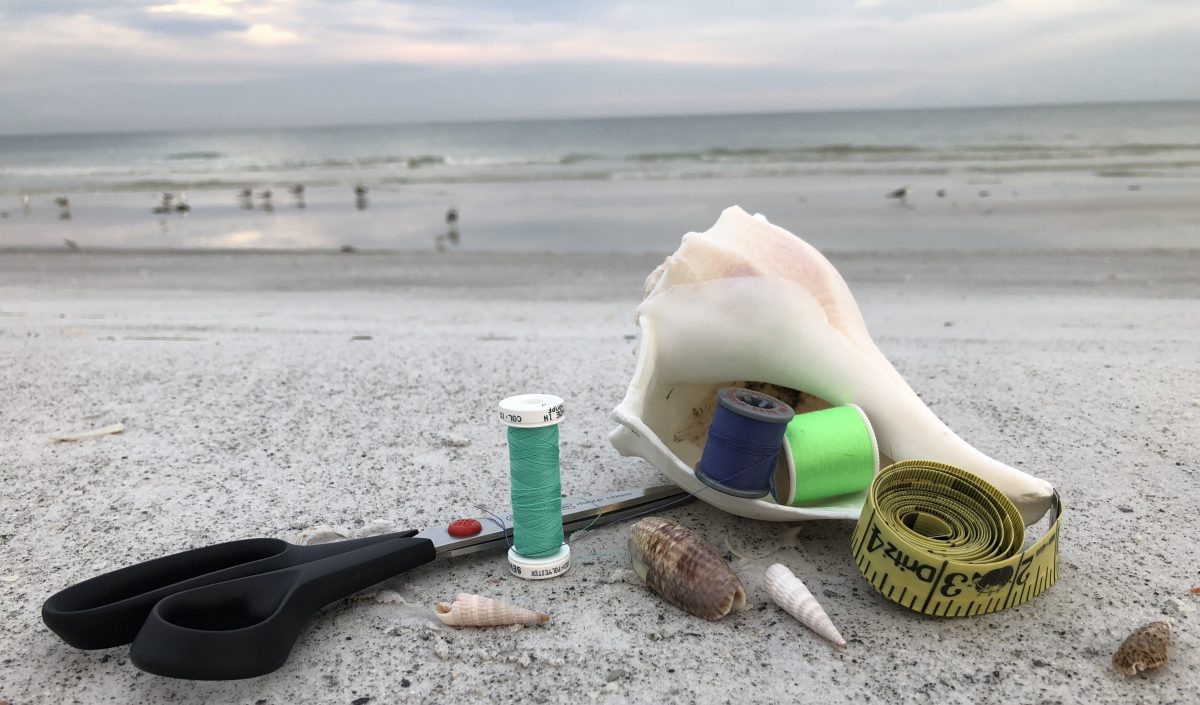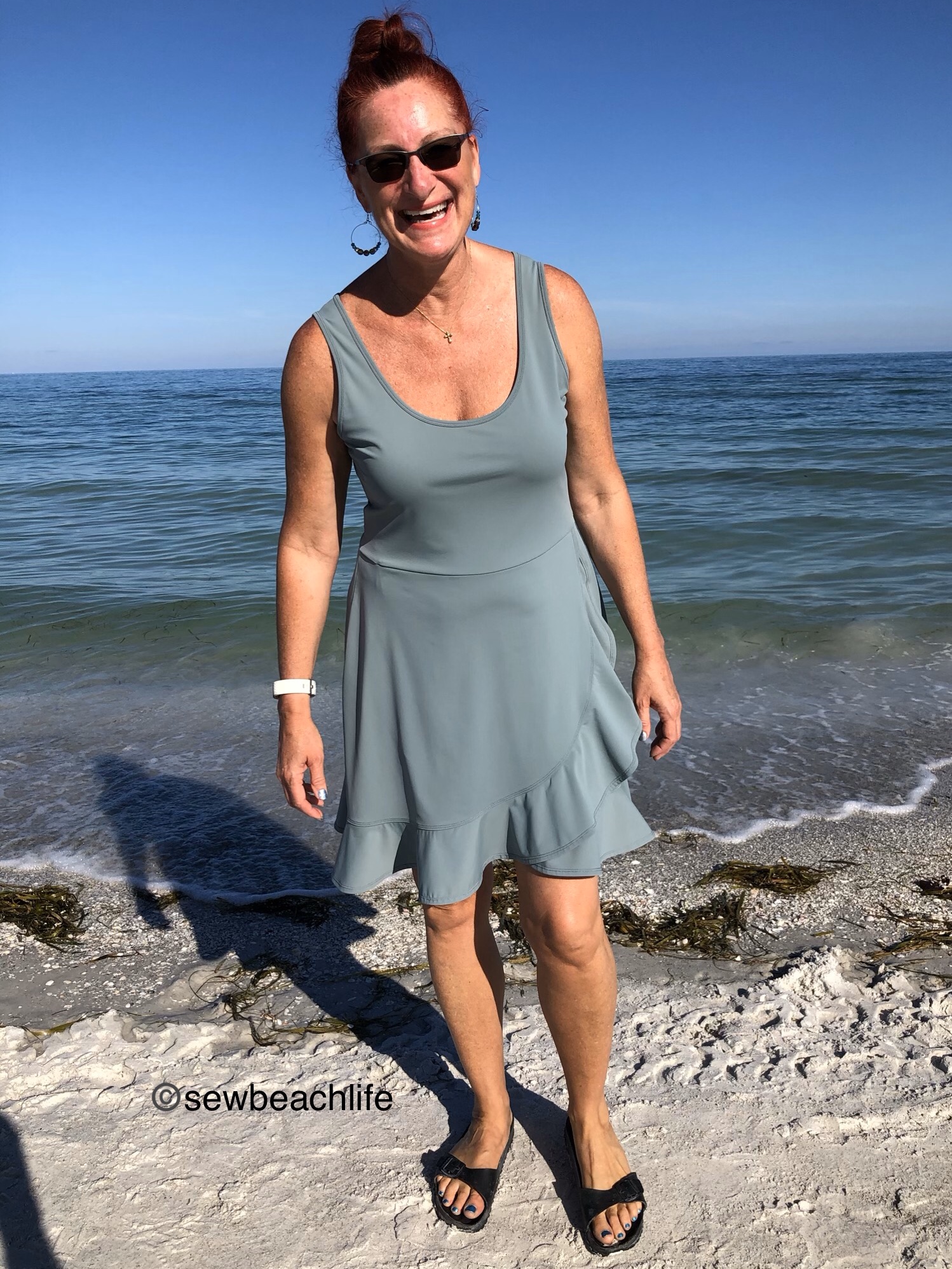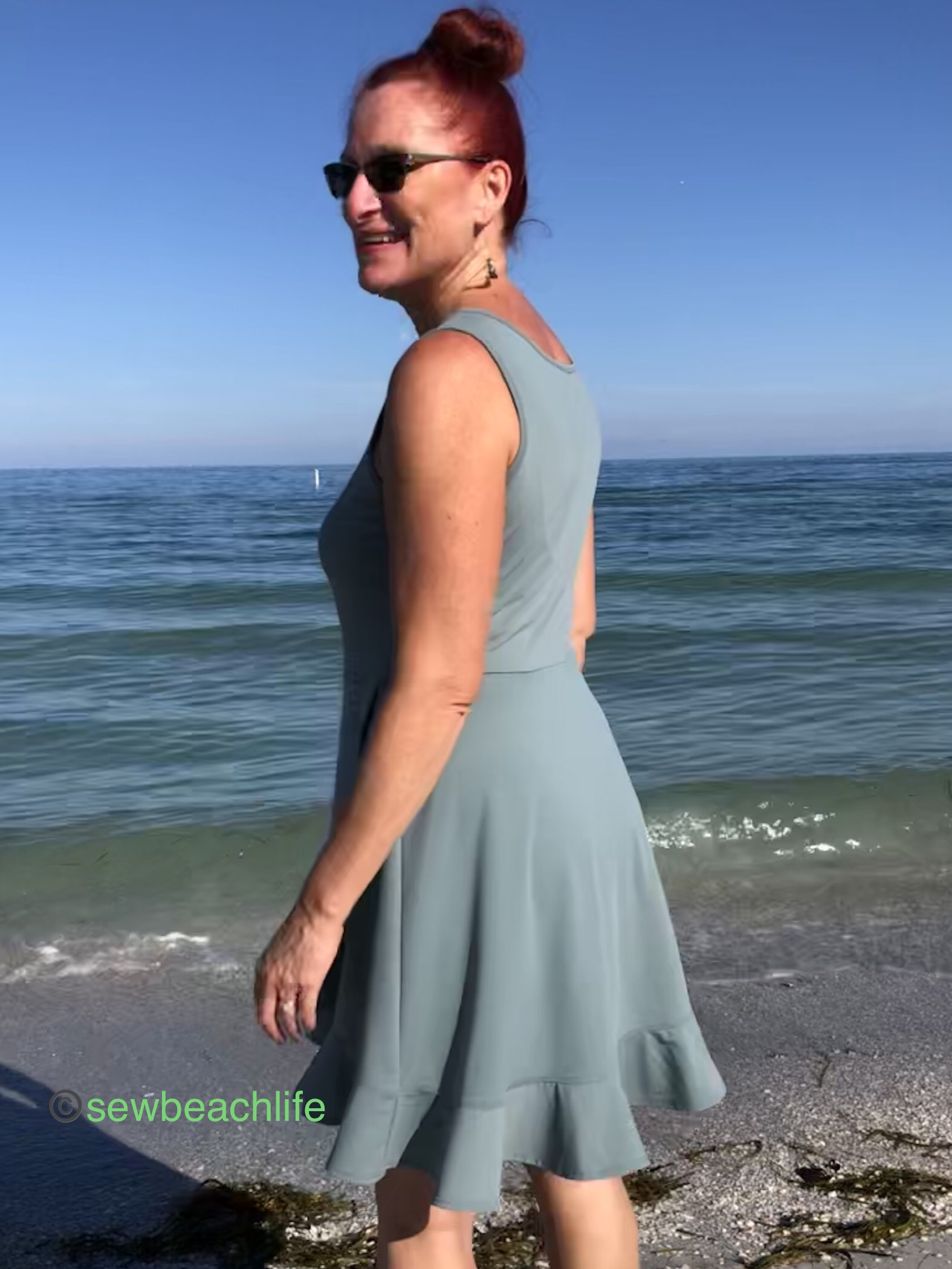Summer clothes are so much more fun than winter clothes. They’re light and comfortable, and tend to be more colorful. Swishy sundresses that you can throw on and head out the door are a great summer look.
The new Frolic Romper and Dress by Stitch Upon A Time is perfect for summer breezes. The wrap around skirt is full and swishy, and the top can have a halter tie or cross back straps. Mine started out as a halter top, which I thought was really cute.

But after wearing it a while, the weight of my bust pulled on my neck too much, so I turned it into a cross back.
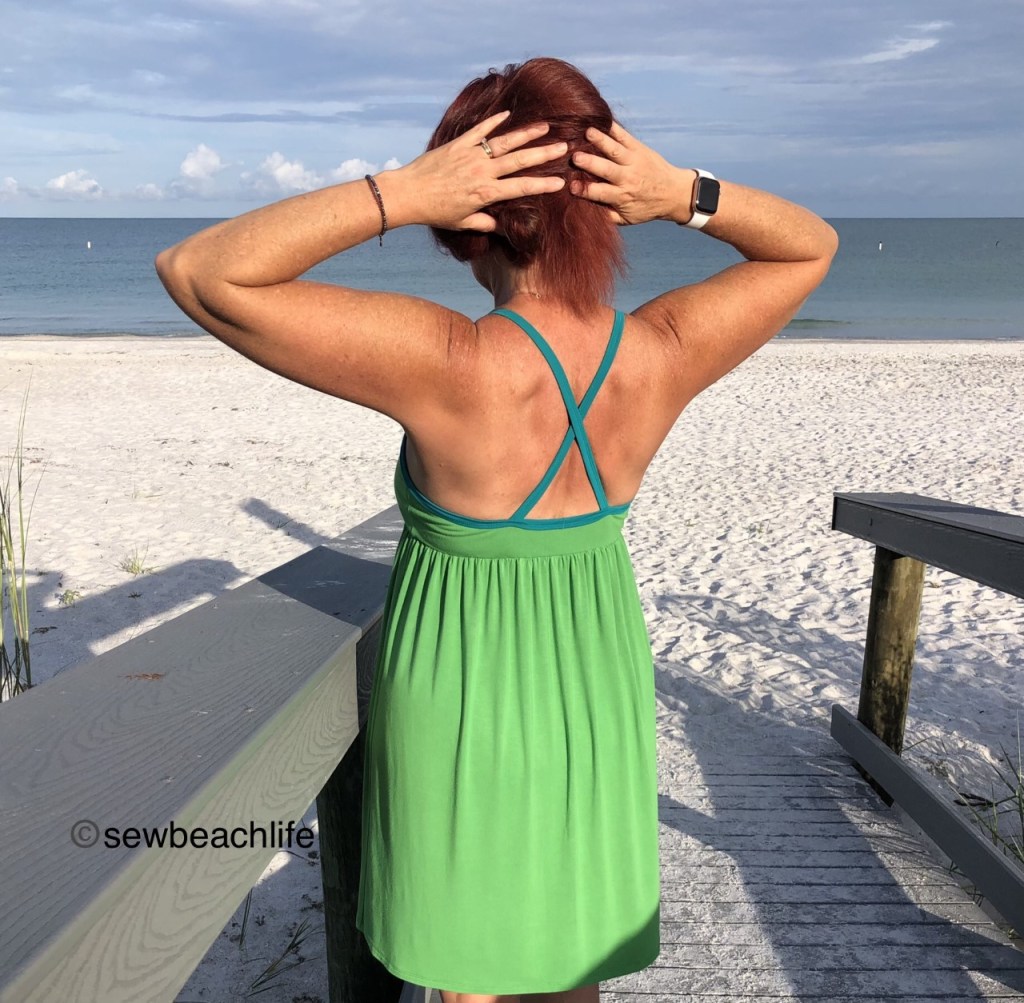
I think it’s just as sexy, and it’s certainly more comfortable for my neck. The wrap skirt is perfect for skimming over the belly, without being tight or revealing.

I thought it would be fun to climb up on the railing for a photo, to show the slit of the wrap around skirt. Try not to laugh at my version of a “sexy pose”. Hahahahahaha! Of course after climbing up on the railing, I had to jump down, in a perhaps not quite so lady-like fashion. 🙂
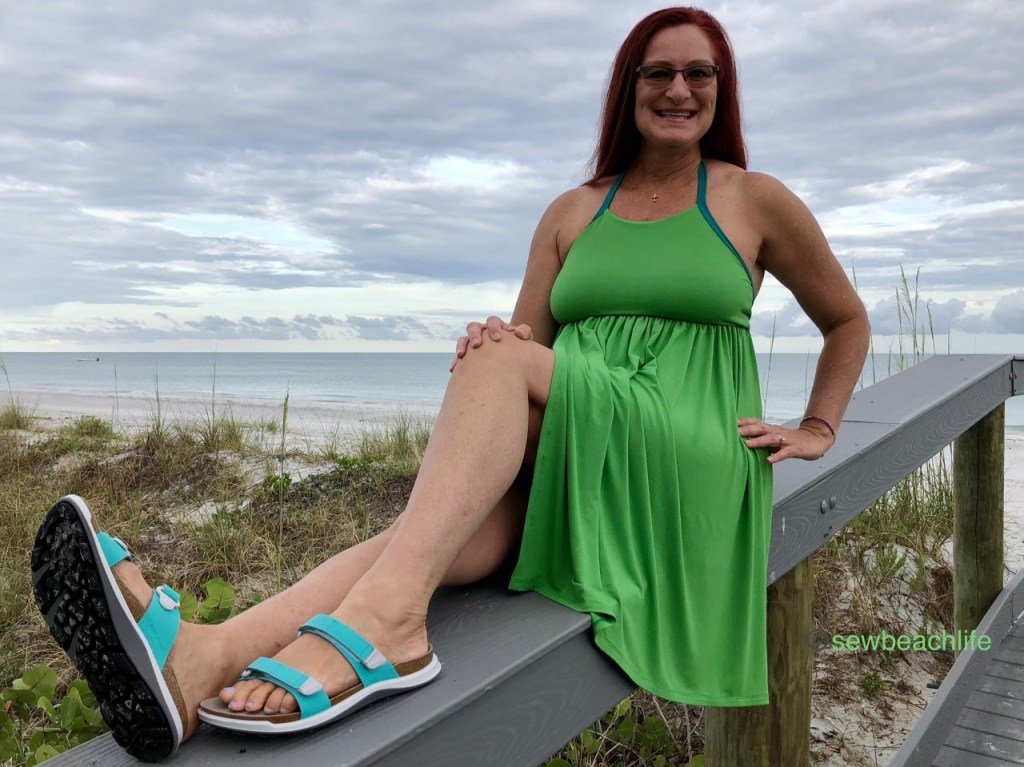
I love the drape of high quality rayon spandex, it’s perfect for dresses. As I am not small-chested, I decided to use a nylon spandex tricot swim fabric as the inner layer on the bodice. The stronger rebound of the swim fabric gave me extra support and coverage. During testing, it was suggested to add elastic at the bottom of the bodice, sandwiched between the inner and outer layers for more support. Since I need maximum support, I used 1″ knit elastic.
To help keep the elastic in place (and give myself a guide for sewing the skirt on), I basted the main and lining layers wrong sides together, 1″ from the bottom edge of the bodice. I cut the elastic to fit snugly, yet comfortably under my bust, overlapped 1/2″, and zig-zagged the elastic to form a loop. Then I slid the elastic in between the fabric layers, and pinned at the quarter points.
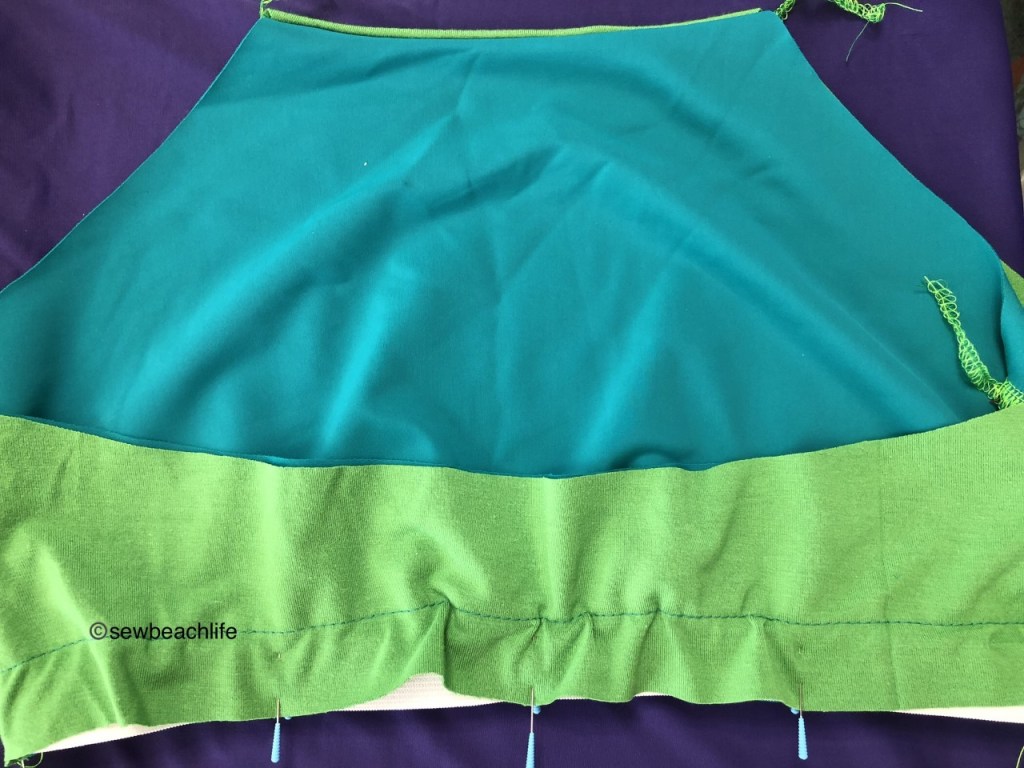
After I serged the elastic around the bottom, it was time to add the binding. Since this is a summer dress, I wanted a fun pop of color for the binding, and decided to use the same teal nylon spandex tricot as I did for the bodice lining layer. To give my bust even more support, I added clear elastic when serging the binding to the bodice.

Then I pressed the binding up toward the seam allowance, wrapped it around the inside and pinned it in place. Then it was time to coverstitch.

Next came gathering the skirt. Have I mentioned that I dislike gathering? I like the look when it’s done well, but it is so time consuming to gather and pin in place! This is where that basting line above the elastic came in handy. The skirt got pinned to the bodice, right sides together, leaving the (encased) elastic below. Because I wanted to ensure that the skirt was even, I hand-basted the skirt to the bodice. Can I just mention how very grateful I am to live in this era of fancy sewing machines, sergers, and coverstitch machines? I cannot imagine how long it used to take to sew all your clothing by hand.

While I love the result, it was a bit time consuming to sew the skirt to the bodice above the elastic, rather than just serging it on. The next time I make this dress, I plan to add an inch to the bodice lining so that I can serge the 1″ elastic on, flip it up and coverstitch it. Then I’d take an inch off the main fabric bodice so that the skirt could just be serged to the outer bodice (and still line up with the bodice lining). It’s important that the seam line falls right under the bust to give the most flattering shaping.
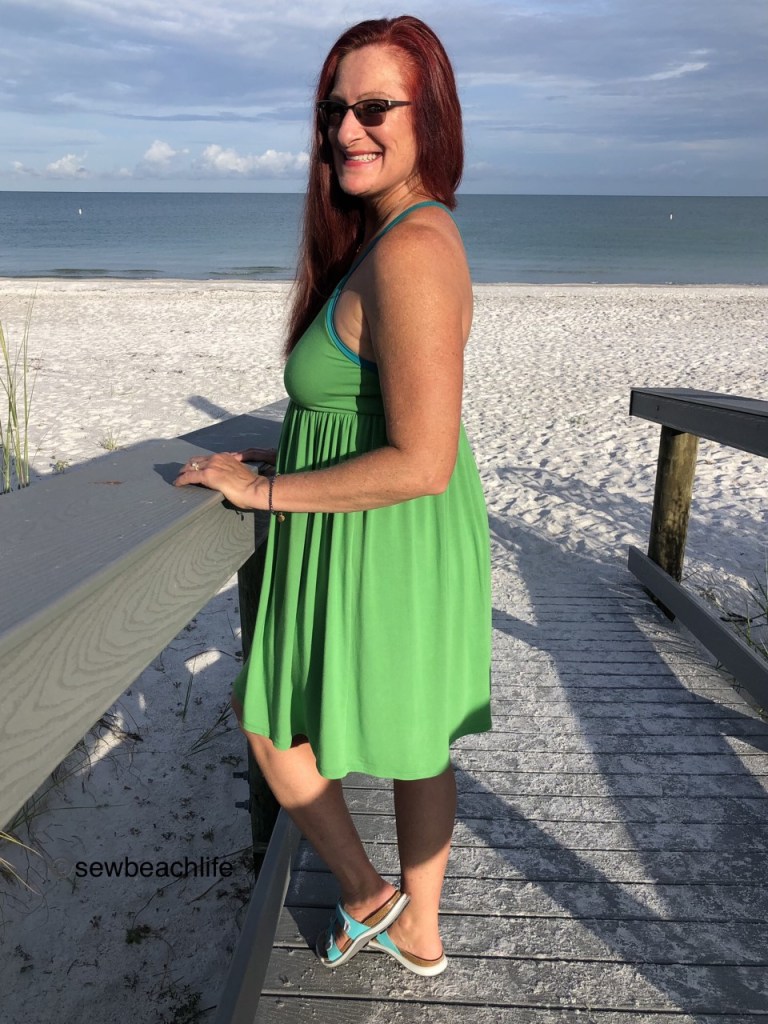
Suffice it to say that I love this dress! It’s comfortable and flattering, while hiding my love of buttered popcorn! 🙂 It’s going to get worn all summer long. Ok, did anybody else just start singing?

The details: the Frolic Romper and Dress, along with all their other patterns and fabric are available at Stitch Upon A Time.
Technically, the cross back straps should have gone through loops, and then just tied in a bow. But I am long from shoulder to bust, and the straps didn’t seem quite long enough for a bow. And well, I like things clean and simple. So I just sewed them into place. It works for me!
I purchased the rayon spandex and nylon spandex tricot from Phee Fabrics.
The links to Stitch Upon A Time are affiliate links, which means that at no extra cost to you, I may receive a small commission if you purchase through my link. As always, I only give my honest opinion. After all, it is my blog, which represents me! Thank you for reading and sharing my love of creating, sewing, patterns, fabric, and making beautiful, well-fitting garments! ❤
